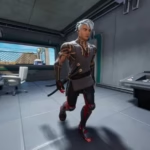How to run The Last of Us Part 2 on PC with better performance.
Officially released for PC on April 3rd, The Last of Us Part 2 Remastered arrives on the market with high expectations. The port, developed by Nixxes Software , seeks to overcome the problems faced in adapting the first title in the franchise. However, a technical analysis by Digital Foundry reveals that, although more stable, the game still requires adjustments to run with satisfactory performance on computers.

Among the highlights are features like DLSS Frame Generation and dynamic resolution scaling, which optimize fluidity. But the hardware requirements remain high, especially for those seeking performance equivalent to the PlayStation 5 , which includes consistent frame rates of 60 frames per second at 1080p .
Intermediate plates struggle to maintain stability.
Users with mid-range graphics cards, such as the RTX 3060 , face challenges when trying to maintain a stable frame rate. Even with graphics settings similar to those of the PS4 Pro , performance fluctuates in more complex scenes, highlighting a mismatch between the power of modern GPUs and the game's optimization.
Furthermore, visual quality suffers significant cuts in these cases. Reflections with visual artifacts and compromised secondary lighting reduce graphical fidelity, especially when compared even to the PlayStation 4 version. The recommendation, in this case, is to adopt balanced settings to preserve the experience without sacrificing performance.

The processor also impacts the performance of The Last of Us Part 2.
The workload on the CPU (central processing unit) is another critical point. Even with improvements in data loading and the use of DirectStorage , which speeds up access to game files, performance is still impacted by processor usage spikes. In models like the Ryzen 5 3600, this translates into momentary freezes in areas with many elements to load.
Asynchronous shader compilation—a technique used to improve performance—paradoxically contributes to instability. This is because it suddenly activates multiple CPU cores, generating noticeable frame rate drops, even when the FPS (frames per second) numbers remain high.
Limiting frames helps ensure fluidity.
To mitigate these issues, Digital Foundry suggests using FPS limits, especially on less powerful machines. Enabling V-Sync at 60 Hz , for example, can smooth out stuttering. Another alternative is using the Special K software , which offers greater control over frame locking, improving fluidity even on monitors with VRR refresh rate ) technology.
These external tools don't replace a good internal game configuration, but they serve as an effective complement for users who want a more stable experience without having to invest in immediate hardware upgrades.
Recommended settings for two user profiles
To guide players, two configuration profiles were established based on a comparison with the consoles. The first, aimed at mid-range graphics cards like the RTX 3060, seeks equivalence with the PS4 Pro. The second, intended for GPUs like the RTX 4070, targets the performance of the PS5 in performance mode.
For the RTX 3060, recommendations include medium detail level, high-quality textures, and real-time reflections enabled. Elements such as screen-space shadows and contact shadows should be turned off, as well as volumetric effects, to reduce the graphical load.
In the case of the RTX 4070, the ideal is to raise most parameters to the maximum, including shadow resolution and visual effects quality. Even so, it's worth keeping motion blur at a medium level and limiting volumetric effects to ensure a balance between beauty and performance.

Graphical issues persist in the port of The Last of Us Part 2.
Despite the advancements, The Last of Us Part 2 presents visual inconsistencies that affect immersion. Among the problems are missing shading at a distance, texture flickering, and erratic DLSS (Deep Learning Super Sampling) performance, even when DLAA (AI anti-aliasing) technology is enabled.
Digital Foundry recommends using Nvidia's latest Transformer model, available in Nvidia's own tools, to reduce artifacts and improve image sharpness. This helps to overcome limitations of the port, but does not completely eliminate the identified technical problems.
Ideal configuration for mid-range graphics cards (equivalent to PS4 Pro)
Recommended for users with graphics cards like the RTX 3060 , this configuration seeks a balance between performance and visual quality, allowing for smooth 1080p gaming, even with occasional graphical limitations.
- Level of Detail: Medium
- Texture Quality: High
- Quality of Visual Effects: High
- Texture Filtering: 16x
- Shadow Quality: Customizable
- Resolution of Spotlight Shadows: Very High
- Resolution of Shadows from Light Sources: High
- Ambient Shadows: High
- Directional Shadow Resolution: High
- Distance from Directional Shadows: High
- Screen Space Shadows (SSR): Off
- Dynamic SSS (Subsurface Scattering): Off
- Contact Shadow Quality: Off
- Image-Based Lighting (IBL): On
- Reflected Lighting: On
- Ambient Occlusion (AO): Quality
- Real-Time Reflections: High
- Reflections of Cloud Shadows: On
- Subsurface Dispersion: Linked
- Refraction Quality: Very High
- Depth of Field: High
- Motion Blur Quality: Medium
- Particle Density: High/Very High
- Volumetric Effects: Low
- Lens Brightness: Half Resolution

Ideal configuration for advanced graphics cards (equivalent to PS5 Performance)
For those with GPUs like the RTX 4070 , it's possible to achieve visual results and performance similar to the PlayStation 5's performance mode, with higher resolution and greater graphical fidelity.
- Level of Detail: Very High
- Texture Quality: Very High
- Visual Effects Quality: Very High
- Texture Filtering: 16x
- Shadow Quality: Customizable
- Resolution of Spotlight Shadows: Very High
- Resolution of Shadows from Light Sources: High
- Ambient Shadows: High
- Directional Shadow Resolution: Very High
- Distance from Directional Shadows: High
- Screen Space Shadows (SSR): High
- Dynamic SSS (Subsurface Dispersion): On
- Quality of Contact Shadows: High
- Image-Based Lighting (IBL): On
- Reflected Lighting: On
- Ambient Occlusion (AO): Quality
- Real-Time Reflections: High
- Reflections of Cloud Shadows: On
- Subsurface Dispersion: Linked
- Refraction Quality: Very High
- Depth of Field: High
- Motion Blur Quality: Medium
- Particle Density: Very High
- Volumetric Effects: Average
- Lens Brightness: Half Resolution
The Last of Us Part 2 experience depends on the balance between visuals and performance.
The PC port of The Last of Us Part 2 is undoubtedly more solid than its predecessor. However, the ideal experience still depends on careful adjustment of settings, especially for those without high-end hardware.
Limiting frames, adjusting shadows, and knowing how to balance graphic effects are essential measures to ensure fluidity without compromising visual quality. By following the recommendations based on testing, players can enjoy the game with stability, even on medium settings.
The expectation is that future updates will improve overall optimization. Until then, technical knowledge and experimentation are the greatest allies for those who wish to explore the post-apocalyptic universe of Ellie and Abby on PC.













